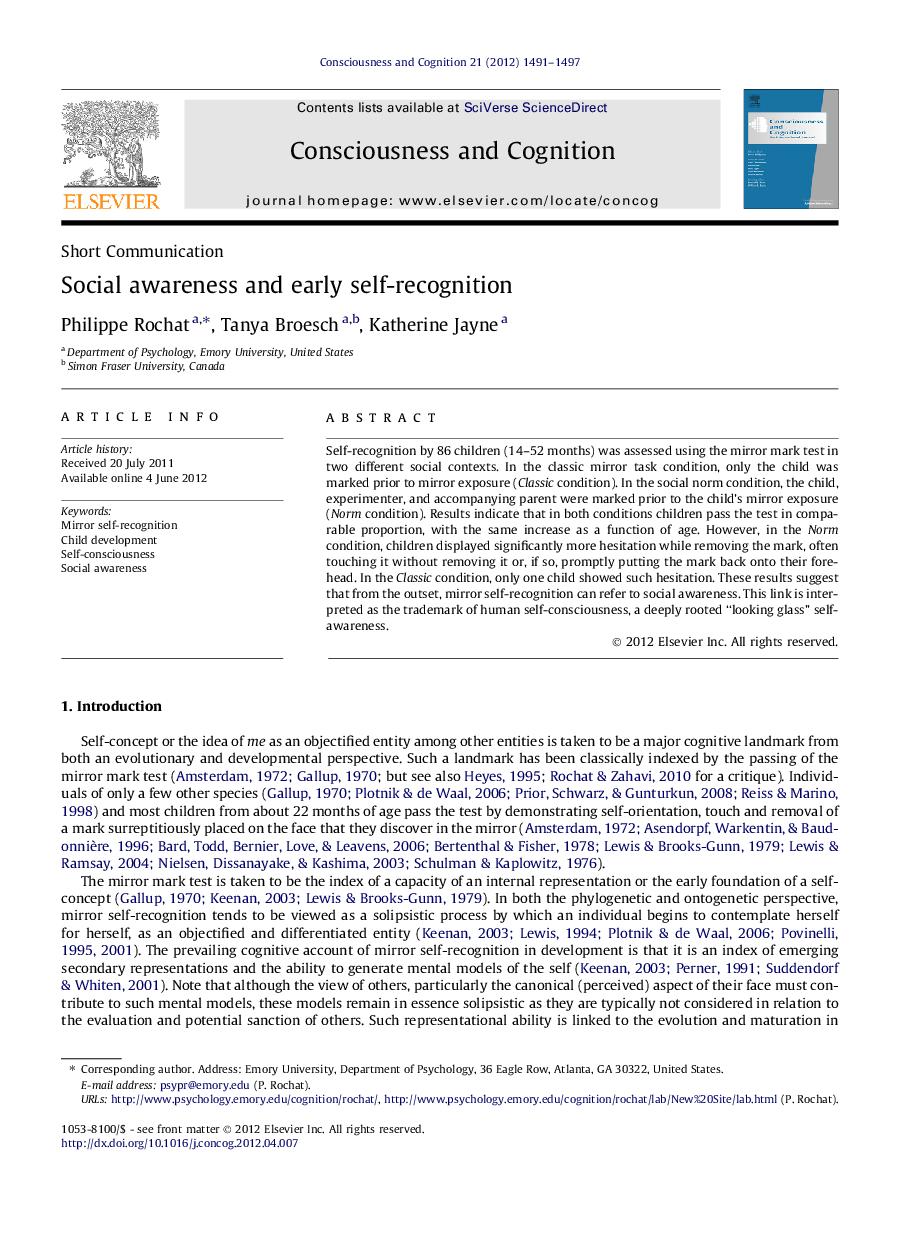| Article ID | Journal | Published Year | Pages | File Type |
|---|---|---|---|---|
| 927635 | Consciousness and Cognition | 2012 | 7 Pages |
Self-recognition by 86 children (14–52 months) was assessed using the mirror mark test in two different social contexts. In the classic mirror task condition, only the child was marked prior to mirror exposure (Classic condition). In the social norm condition, the child, experimenter, and accompanying parent were marked prior to the child’s mirror exposure (Norm condition). Results indicate that in both conditions children pass the test in comparable proportion, with the same increase as a function of age. However, in the Norm condition, children displayed significantly more hesitation while removing the mark, often touching it without removing it or, if so, promptly putting the mark back onto their forehead. In the Classic condition, only one child showed such hesitation. These results suggest that from the outset, mirror self-recognition can refer to social awareness. This link is interpreted as the trademark of human self-consciousness, a deeply rooted “looking glass” self-awareness.
► 14–52 month-olds were observed in the mirror mark test in two social contexts. ► Children pass the mark test differently when people around also wear a mark. ► The data demonstrate an early link between self- and social awareness.
